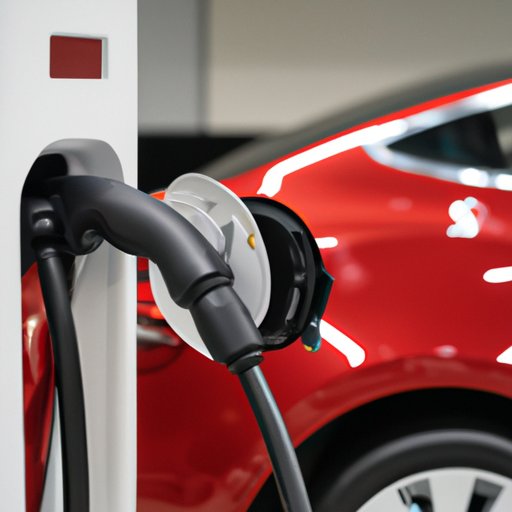
How to Charge a Tesla: A Comprehensive Guide
Electric cars are becoming more and more popular, and Tesla is leading the way in the industry. Charging a Tesla can seem daunting, especially if you’re new to electric cars. But don’t worry, we’re here to help. In this guide, we’ll explore all of the different ways to charge a Tesla, from charging at home to using Tesla’s Supercharger network, and we’ll provide tips and advice along the way.
Charging a Tesla at Home
Charging a Tesla at home is the most convenient way to charge your car, and it’s also the most cost-effective. There are different options for installing a home charging station. You can either use Tesla’s Wall Connector or a third-party charging solution.
The Wall Connector offers the fastest charging speeds and can charge a Tesla up to 44 miles of range per hour. It’s the most convenient and reliable way to charge a Tesla at home. However, it’s also the most expensive option, starting at $500.
Alternatively, you can use a third-party charging solution. There are different types of connectors, including J1772, NEMA 14-50, and NEMA 5-15. The NEMA 14-50 is the most powerful and allows for up to 30 miles of range per hour, while the NEMA 5-15 is the slowest and only offers up to 3 miles of range per hour. The type of connector you choose will depend on your home’s existing electrical system and your budget.
To maximize efficiency when charging a Tesla at home, you should always park your car close to the charging station, ensure that the charging port is clean, and charge your car during off-peak hours to take advantage of lower electricity rates.
Using Public Charging Stations
If you’re planning a longer trip, you’ll need to use public charging stations. Fortunately, there are many public charging networks available, such as ChargePoint, EVgo, and Electrify America. You can find public charging stations using Tesla’s navigation system, the PlugShare app, or the charging network’s website.
Before you start your trip, it’s essential to plan out your charging stops. You’ll need to know where charging stations are located and how long it will take to charge your car at each stop. You should also take into account any detours or unexpected delays that may affect your trip.
When using a public charging station, it’s important to consider safety first. Always park in a well-lit area and lock your car before plugging it in. You should also make sure that the charging station is well maintained and in good working condition.
Maximizing Range and Minimizing Charging Time
To maximize the range of your Tesla, you should adjust your driving habits. Driving at a constant speed and avoiding sudden accelerations and hard braking can increase your car’s range. You can also use Tesla’s range calculator tool to determine how far you can travel and how long it will take to charge your car.
To minimize charging time, you should set the charge limit on your Tesla. Setting the charge limit to 80% can reduce the time it takes to charge your car and increase the lifespan of your battery. You should also plan your daily commutes or longer trips to take advantage of charging stops along the way.
Tesla’s Supercharger Network
Tesla’s Supercharger network is a game-changer for long-distance travel. There are over 25,000 Superchargers worldwide, and they’re located at convenient locations like shopping centers, restaurants, and hotels. Superchargers offer the fastest charging speeds, and you can get up to 200 miles of range in just 15 minutes.
To find a Supercharger, you can use Tesla’s navigation system, the Tesla app, or visit Tesla’s website. When using a Supercharger, it’s important to park correctly and follow the on-screen instructions.
To maximize efficiency when using Tesla’s Supercharger network, you should always plan your trip in advance, start with a high battery charge, and avoid charging to 100% unless necessary.
Managing Different Types of Charging Scenarios
Managing different types of charging scenarios can seem overwhelming, but Tesla makes it easy. You can plan a trip using Tesla’s routing software, which will automatically route you to the most convenient charging stations along the way. You can also optimize charging times for daily commutes or longer trips using Tesla’s mobile app.
To manage different types of charging scenarios, you should always plan ahead and be prepared for unexpected delays. You should also take advantage of charging stations along the way to ensure that you always have enough range to reach your destination.
Conclusion
Charging a Tesla may seem complex, but once you understand how to charge your car, it becomes second nature. We’ve explored all of the different ways to charge a Tesla, from charging at home to using Tesla’s Supercharger network, and provided tips and advice along the way. We encourage you to share your own tips and experiences in the comments section below.




